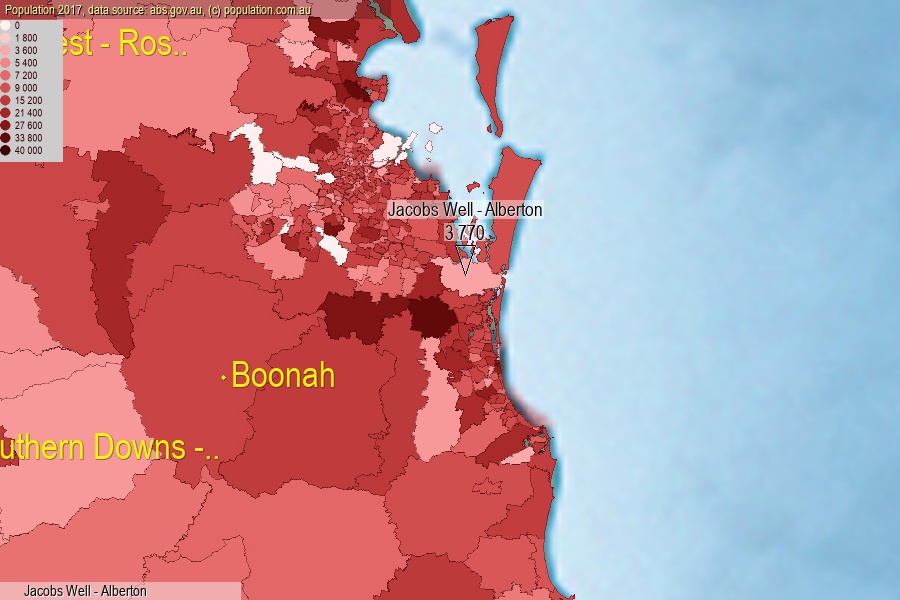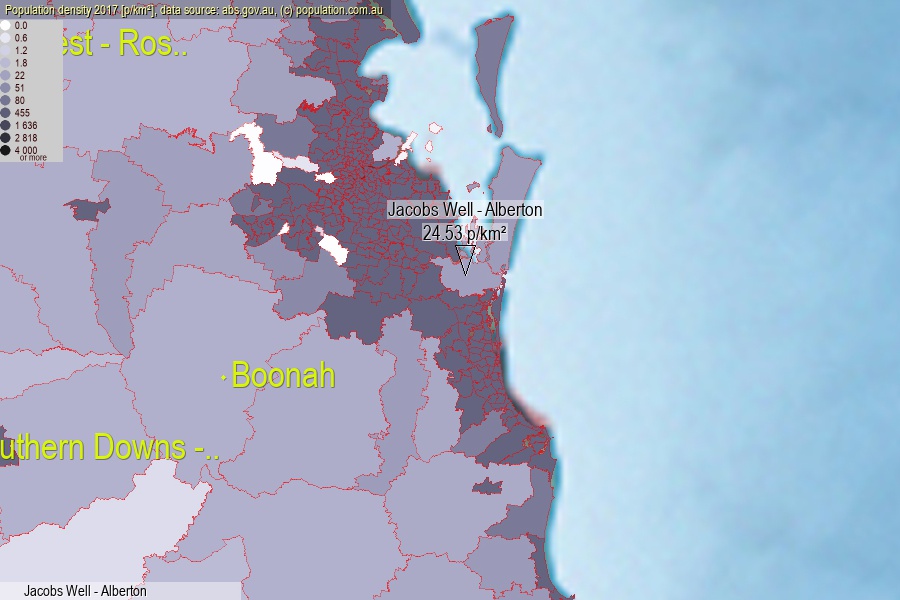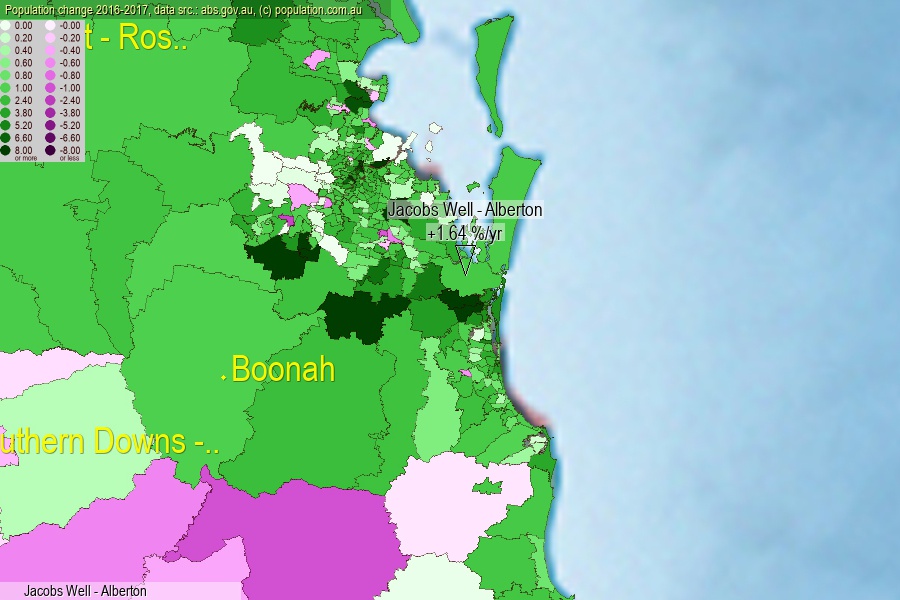 population.com.au
population.com.auLast official estimated population of Jacobs Well - Alberton (as Statistical Area Level 2) was 3 770 people (on 2017-06-30)[2]. This was 0.02% of total Australian population and 0.076% of QLD population. Area of Jacobs Well - Alberton is 153.70 km², in this year population density was 24.53 p/km² . If population growth rate would be same as in period 2016-2017 (+1.64%/yr), Jacobs Well - Alberton population in 2025 would be 4 296. [0]



Click to enlarge. Jacobs Well - Alberton is located in the center of the images.
Population [people], population density [p./km²] and population change [%/year] [2]
View borders » (new window) [4]
[1991-1992] +3.43 %/Yr.
[1992-1993] +1.87 %/Yr.
[1993-1994] +5.04 %/Yr.
[1994-1995] +5.99 %/Yr.
[1995-1996] +5.80 %/Yr.
[1996-1997] +3.47 %/Yr.
[1997-1998] +1.33 %/Yr.
[1998-1999] +2.46 %/Yr.
[1999-2000] +1.62 %/Yr.
[2000-2001] +2.33 %/Yr.
[2001-2002] +3.15 %/Yr.
[2002-2003] +4.75 %/Yr.
[2003-2004] +5.28 %/Yr.
[2004-2005] +3.58 %/Yr.
[2005-2006] +2.71 %/Yr.
[2006-2007] +2.17 %/Yr.
[2007-2008] +3.45 %/Yr.
[2008-2009] +3.43 %/Yr.
[2009-2010] +1.75 %/Yr.
[2010-2011] +1.36 %/Yr.
[2011-2012] +0.82 %/Yr.
[2012-2013] +1.01 %/Yr.
[2013-2014] +1.98 %/Yr.
[2014-2015] +1.38 %/Yr.
[2015-2016] +2.94 %/Yr.
[2016-2017] +1.64 %/Yr.
[0] Calculated with linear interpolation from officially estimated population
[1] Read more about SA2 and Australian Statistical Geography Standard (ASGS) on abs.gov.au
[2] Population data from Australian Bureau of Statistics (Population and density: 2017; change: 2016-2017)
[3] Digital Boundaries: Australian Statistical Geography Standard (ASGS) 2016.
[4] Border coordinates are simplifyed using Ramer-Douglas-Peucker algorithm.